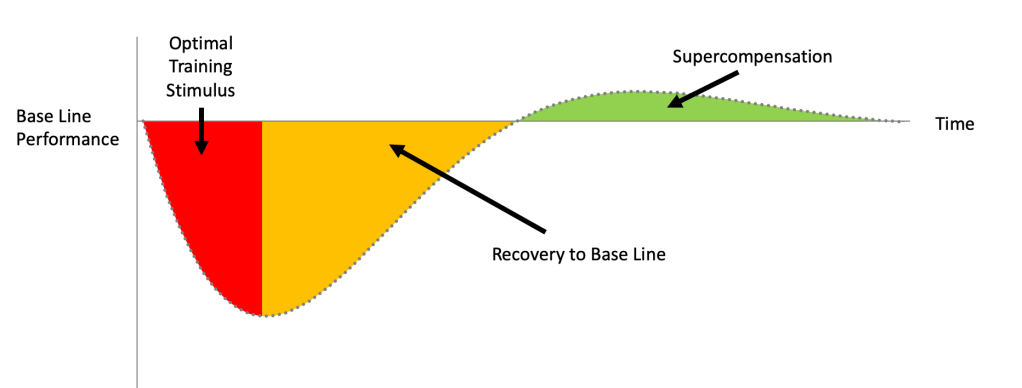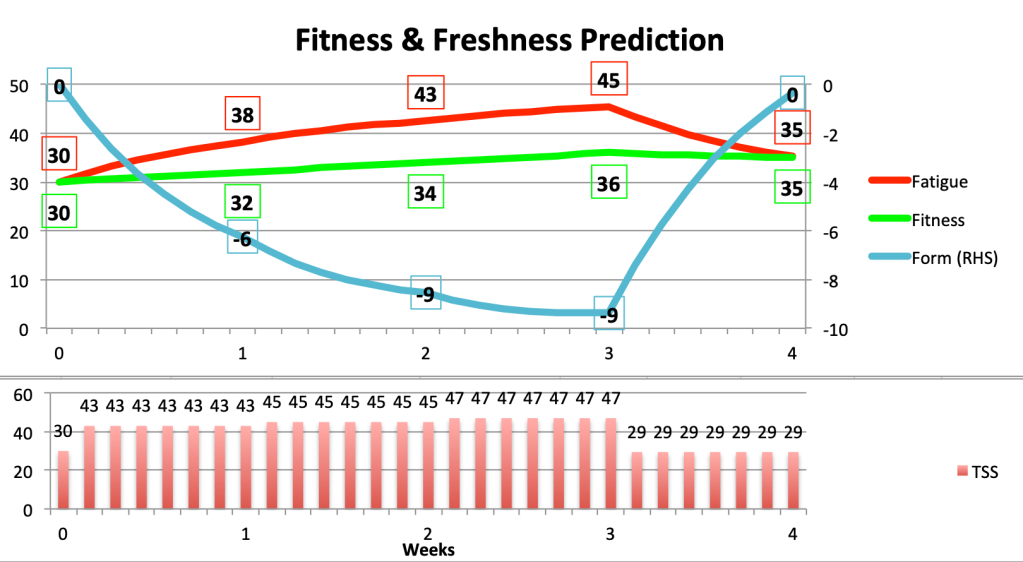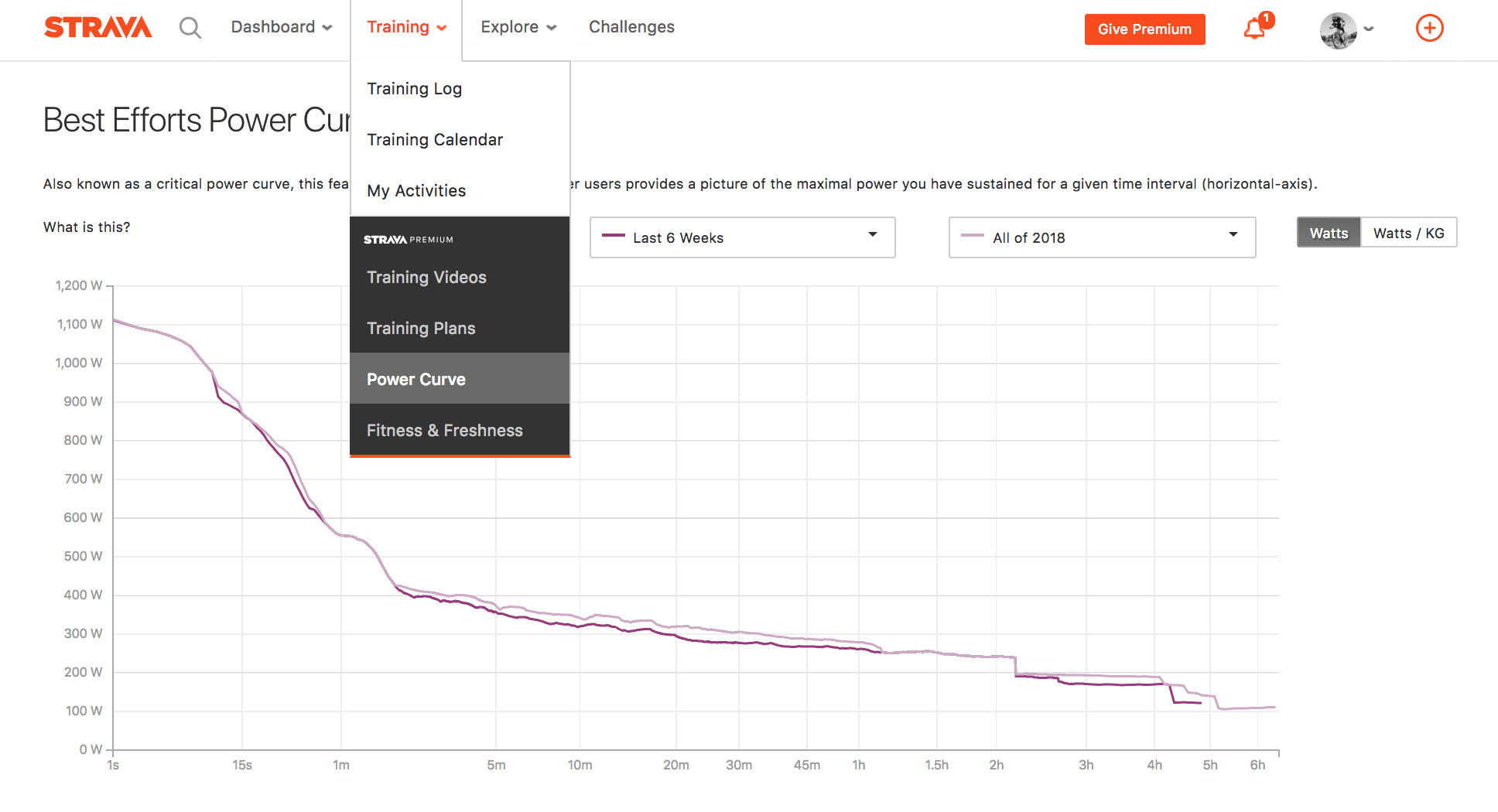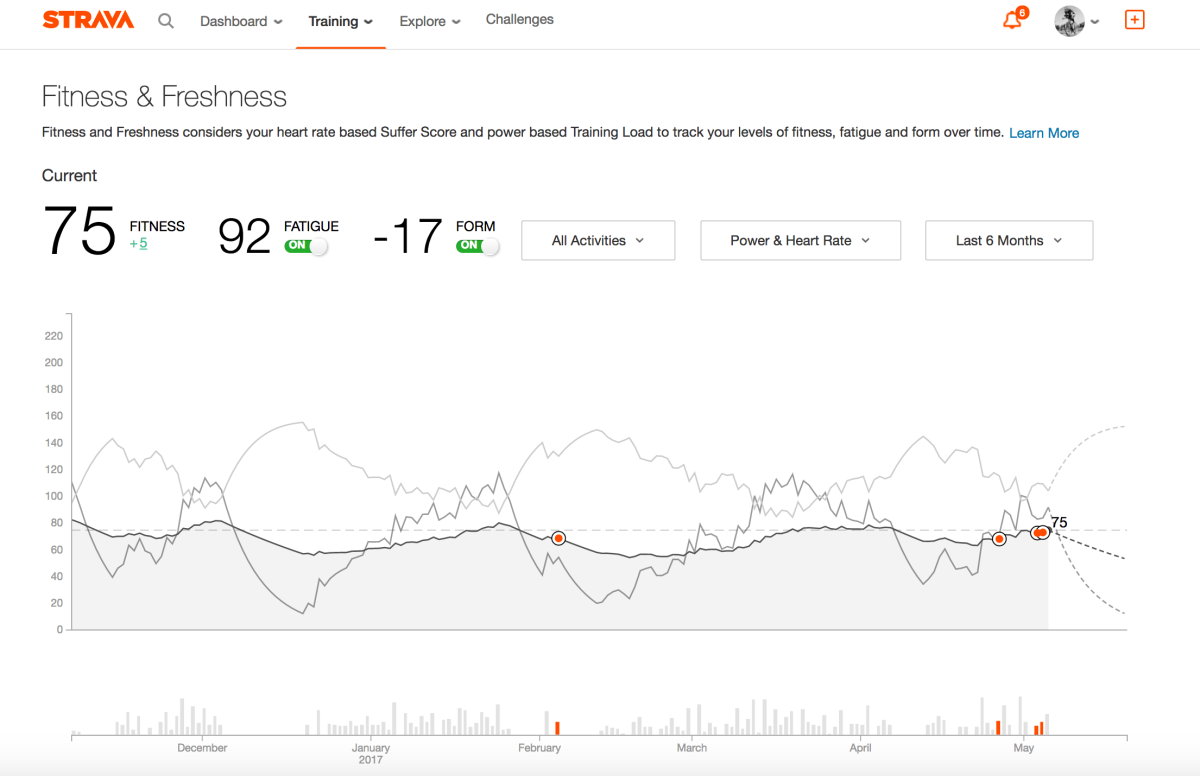
Supercompensation sounds like a reference to an investment banker’s salary, but in fact it describes the body’s ability to adapt positively to a training stimulus. The idea is to attain a higher level of fitness, following a training session, than you had before. In fact, that is generally the point of training. This concept is closely linked to Strava’s Fitness and Freshness charts.
The development of athletic performance requires a delicate balance between an adequate stimulus that drives adaptation and the provision of sufficient recovery time to allow these adaptations to take place
Endocrinology of Physical Activity in Sport, Third Edition
Much has been written about supercompensation, but, as the quotation above highlights, improving your own personal performance depends on
– applying the optimal amount of training stimulus and
– allowing the correct amount of recovery time.
How does supercompensation work?
A hard training session puts your body under stress. An athlete who is perspiring profusely and complaining of aching limbs experiences similar symptoms to a patient with a severe fever. The stress induced by both of these situations is picked up in the brain by the hypothalamus, which triggers a range of hormonal responses, putting the body into recovery mode.
Physical exercise challenges the muscular-skeletal, cardiovascular and neurological systems. The hormonal response elicits a range of actions around the body, including muscle repair, replenishment of glycogen stores, increase in mitochondria and reinforcement of neural pathways. These processes do not begin until activity has ceased, so, in fact, you become fitter during the rest and recovering phase, rather than while you are actually exercising.
The recovery processes take time and energy. In addition to fuelling before and during exercise, it is important to refuel after a hard training session, particularly during the first 20 minutes.
Optimal training stimulus
Training stimulus is a function of duration and intensity. Strava measures this as Training Load, which shows up as Training Impulse on your Fitness & Freshness chart. This is similar to other commonly used measures. You should also have in mind what aspect of fitness you need to develop for your target events (endurance, power, sprint etc.).
I recently rode over 200km from London to Brighton and back, which Strava calculated as a Training Load of 400. Unfortunately this probably did not make me much fitter, because it left me greatly fatigued. During the next two days that I spent recovering, my body probably just about reattained its previous base line level of fitness and failed to achieve supercompensation. It was a great ride, but it was also an example of excessive training stimulus .

On the other hand, going for a gentle ride without any strong effort is unlikely to put the body under enough stress to give rise to the desired hormonal response. Any supercompensation is likely to be minimal. Some people might call this “junk training”, because higher duration or intensity is needed, in order to become fitter.

So what is the optimal training stimulus you should aim for? A simple answer is to check your Strava Fitness & Freshness page and set a target Training Load equal to about 1.3 to 1.5 times your current Fitness (quite a hard session). This all links back to how to ramp up your fitness.
The right recovery time
As mentioned above, you get fitter while you are recovering. Ideally your next training session should be timed to match the peak of supercompensation. The colour coding of the chart provides a traffic light system. If you train again too early, your body will not have time to recover. But if you leave it too long, you miss the opportunity. As a general rule, it is sensible to follow a hard training day with an easier day. It is also very important to take one full rest day per week, where activity is limited to nothing more than a short walk or some stretching. When is comes to recovery, remember that sleep is “Chief nourisher in life’s feast”.

Functional overreaching (FOR)
Good periodisation of training stimulus and recovery results in beneficial performance adaptation, known as functional overreaching. This stimulates anabolic (muscle building) hormones, such as IGF1 and testosterone, while stress hormones, like cortisol remain low. The athlete sees a steady improvement in performance.

Nonfunctional overreaching (NFOR)
Nonfunctional overreaching occurs when an athlete is too eager to train again. Without sufficient recovery, the body is only just back to base line when it is hit with another bout of exercise. No time is allowed for the anabolic response. This is throwing away the potential benefits of supercompensation and leads to a stagnation of performance.

Overtraining syndrome (OTS)
Overtraining syndrome occurs when the next training session begins before the body has fully recovered from the last one. This can be a problem for athletes juggling a high number of training hours with a full-time job. When the endocrine system is put under this level of stress, cortisol, prolactin and creatine kinase tend to rise, while sex steroids become depressed. This results in an accumulation of fatigue and a progressive deterioration of performance.

When were you last in a fully recovered state?
You can tell which of these situations applies to you, by asking how long has it been since you were in a fully recovered state? If it is days, you should be able to get fitter. If it is weeks, you may be in a state of nonfunctional overreaching. If you have not been in a fully recovered state for months, you have overtraining syndrome. The period taken to recover to a healthy state often has the same timescale.

How do I know if I am in a fully recovered state?
Various apps use heart rate variability (HRV) as an indicator of recovery. Alternatively, you can activate the sliders for Fatigue and Form on your Strava Fitness & Freshness page and look for positive Form. This is when Fitness is greater than Fatigue. My chart below shows a sustained period of high Fatigue and negative Form in April, suggesting that some of the training in that heavy block may have been somewhat counterproductive, but at least I took a rest week in early May.

Super compensation
Supercompensation is the underlying mechanism of periodised training. It works on a number of timescales from the days in a weekly plan, to the weeks in a monthly plan and up to the months in the season’s plan. I hope that this read has provided you with super compensation.











